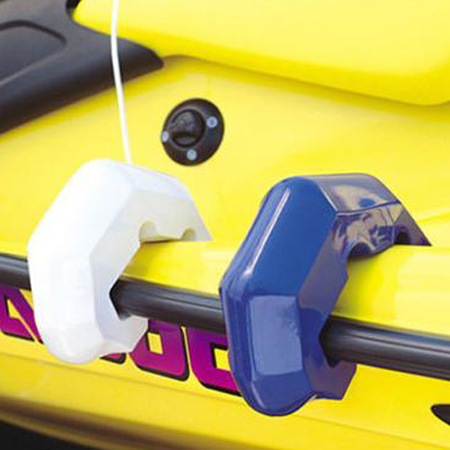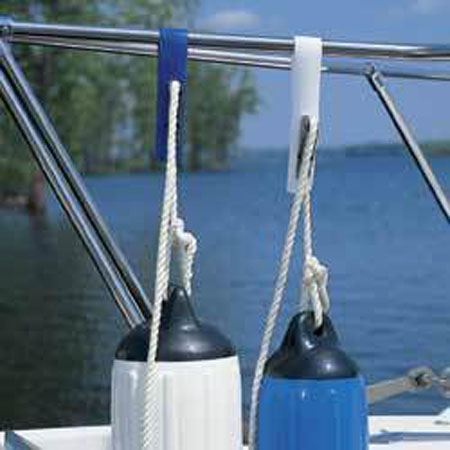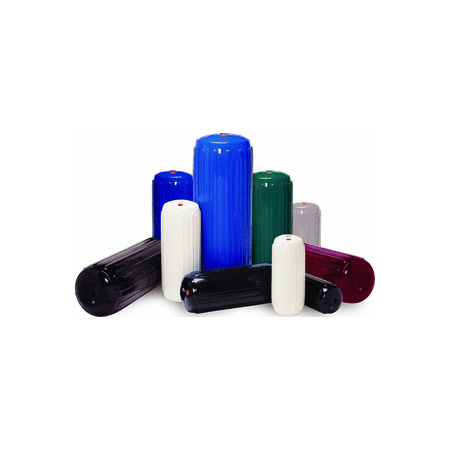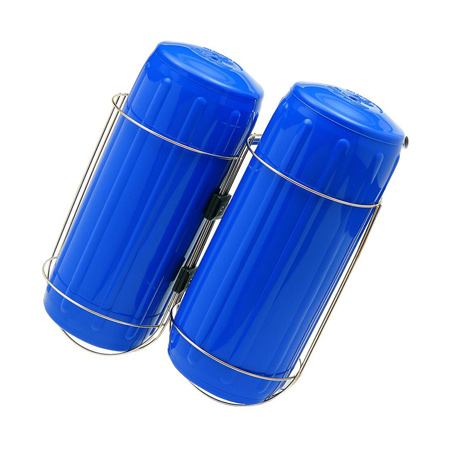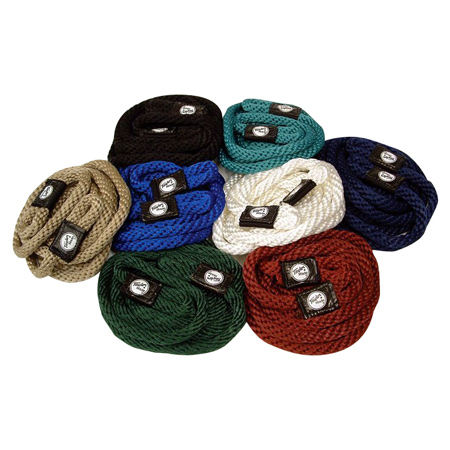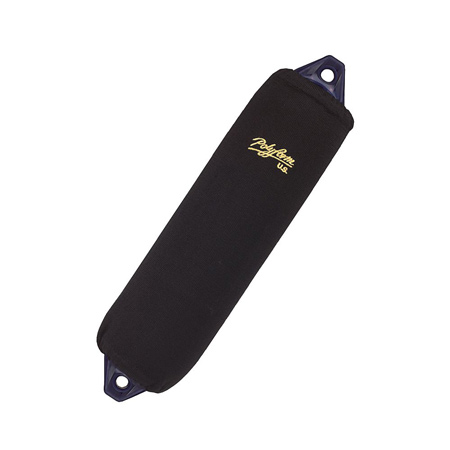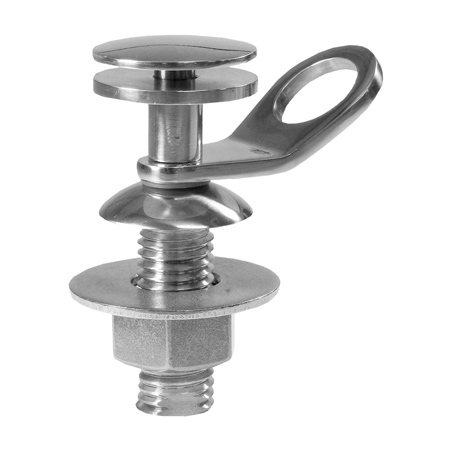Boat Fenders
Boat Fender Types, Shapes and Applications.
Have a question about boat fenders before you make your purchase? Learn about the different types, applications and shapes of boat fenders. In the boating world, a fender is a bumper used to absorb the kinetic energy of a boat or vessel berthing against a jetty, quay wall or other vessel. Fenders are used to prevent damage to boats, vessels and berthing structures. To do this, fenders usually have high energy absorption and low reaction force. Fenders are typically manufactured out of rubber, foam elastomer or plastic. Rubber fenders are either extruded or made in a mold. The type of fender that is most suitable for an application depends on many variables, including dimensions and displacement of the vessel, maximum allowable stand-off, berthing structure, tidal variations and other berth-specific conditions. The size of the fender unit is based on the berthing energy of the vessel which is related to the square of the berthing velocity.
Historically, fenders were woven from rope in a variety of patterns. Fenders of woven rope are still used today by historic boat owners.
Yachts, small leisure craft and support vessels typically have mobile fenders which are placed between the boat and the dock as the boat approaches the dock. Docks and other marine structures, such as canal entrances and bases of bridges, have permanent fenders placed to avoid damage from boats. Old tires are often used as fenders in such places.
If you've been boating, you are probably aware that it's inevitable to encounter situations where your boat bumps into something like another boat, a quay wall, or while docking. When tragedy strikes from running into something, it can create minor to major damage resulting in having to repair the damage which can become very costly and time consuming. Boat fenders provide a safety barrier between the boat and the un-wanted object that is bumping into the boat. At one point in time ropes or old tires were found hanging down the side of the boat to protect against impact. However, with today's technology, fenders are not only more visually pleasing than a rope and an old tire, but are designed from hours of testing and science to ensure your boats has the best protecting from the damaged caused by running into a wall, a boat or a dock.
Fenders come in a multitude of shapes, functions and applications:
Types of Fenders
Ship to Quay Fenders
Ship to quay fenders are found at ports, docks, quay walls and berthing structures. They are designed to absorb the energy when of a berthing boat. These type of fenders are not found on boats, but instead, our found on the walls to prevent damage to the berthing boat.
There are several types of these marine fenders
- Cylindrical
- Arch
- Cell
- Cone
- Pneumatic
- Foam Elastomer
-
Ship-to-Ship
Ship-to-ship fenders are specifically designed to prevent damage from two boats colliding. These type of fenders include :
- Pneumatic
- Foam Elastomer
-
Boat and Vessel
Boat Fenders are the most common fenders found hanging from recreational boats, tugboats, passenger boats and yachts.
These type of fenders include:
- D-Fenders
- Square
- Wing
- Keyhole
- Foam Elastomer
-
Shapes, Functions and Applications
- Cylindrical Fenders
- A cylindrical fender is a very common fender used when you want to make sure the berthing of your boats is safe from damage from the dock or port. This type of fender is usually installed by the dock owner or maintenance man to the walls that are bumped into while berthing.
- Arch Fenders
- Arch fenders are normally used by small to midsize boats or vessels, Arch Fenders are a similar to cylindrical fenders, except for they perform better.
- Cell Fenders
- Cell fenders are the biggest fenders made of rubber from a mold. Cell fenders are extremely sturdy offering minimal reaction. They can handle higher impact and null more energy from any direction.
- Cone Fenders
- A cone fender is a cell fender with improvement to the design and functionality. You will find these types of fenders where high-tide is present and typically spaced evenly apart with a panel to distribute the brunt force of a berthing boat.
- Pneumatic Fenders
- Pneumatic fenders are used for a protective barrier between two ships at sea exchanging, giving or receiving goods. They have a low reaction force and low deflection. This type of fender will typically comply with the ISO 17357 standards. It is also called Yokohama fender or floating fender.
- Hydro-Pneumatic Fenders
- Hydro-Pneumatic Fenders were designed for Submarines. The design depends on the hull, berthing methods, energy absorption, type of submarine and jetty design. They are able to remain in the up-right position while in water to prevent the fender from tipping over and compromising its usefulness.
- Foam Elastomer Fenders
- Similar to a pneumatic fender, foam elastomer fenders core is made of a Polyethylene foam core surrounded by nylon or Kevlar skin. This fender will not lose its structural integrity when punctured.
- D-Fenders
- D-fenders are usually seen around smaller jetties and used on vessels. Engineered with compression molded material.
- Square Fenders
- Similar to D-fenders, Square fenders are generally used on Tug boats, boats and ships.
- Wing Fenders
- Similar to D-fenders, wing fenders withstand the harsh elements from sea water and are very easy to install.
- Keyhole Fenders
- Keyhole fender will be found on Tug boats, boats and ships. They are extremely easy to install and offer maximum protection to Tug and Ferries.
- Tug Boat Fenders
- You guessed it- Tug boat fenders are used for Tug boats. They are very comprised of highly resistant rubber with great vitality properties. These types of fender are mostly found with small boat and tug owners, and are sea water damage resistant.


